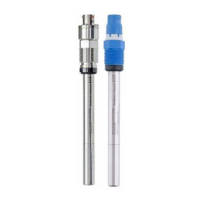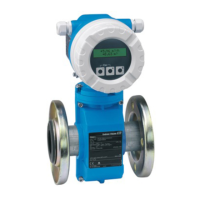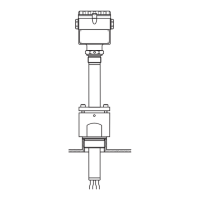Calibration and adjustment Oxymax COS22
18 Endress+Hauser
Calculate the factor L:
Relative air pressure at calibration
L= -----------------------------------------------
1013 hPa
Calculate the calibration value C:
C = S
.
K
.
L
Example
• Air calibration at 18 °C (64 °F), altitude 500 m (1650 ft) above sea level, current air
pressure 1009 hPa (405 in H
2
O)
• S = 9.45 mg/l, K = 0.943, L = 0.996
• Calibration value C = 8.88 mg/l.
You do not need factor K in the table if your measuring device returns the absolute air
pressure L
abs
(air pressure depending on altitude) as the measured value. The formula
for calculation is then: C = S
.
L
abs
.
7.4 Zero point calibration
The zero point is not so important when working with relatively high concentrations of
oxygen.
This situation changes, however, once oxygen sensors are used at low concentrations and
in the trace range and where they are also to be calibrated in the zero point. Zero point
calibrations are demanding as the ambient medium - usually air - already has a high
oxygen content. This oxygen must be blocked off for zero-point calibration of the sensor.
Calibration with zero-point gel can be used here:
The oxygen-depleting gel COY8 (→ 26) creates an oxygen-free medium for zero point
calibration.
Prior to sensor zero point calibration, check:
• Is the sensor signal stable?
• Is the value displayed plausible?
1. If the sensor signal is stable:
Calibrate the zero point.
2. If necessary:
Adjust the sensor to the zero point.
The reference method (sample calibration in zero point) can also be used here if
appropriate collecting vessels or reference measurement are available.
If the oxygen sensor is calibrated too early, this can result in an incorrect zero point.
Rule of thumb: Operate the sensor in zero-point gel for at least 0.5 h.
If the sensor was already operated in the trace range before the zero point calibration,
the time specified above generally suffices. If the sensor was operated in air,
significantly more time must be factored in to also remove residual oxygen from any
dead volume inherent to the design. Here a value of 2 hours applies as a general rule.

